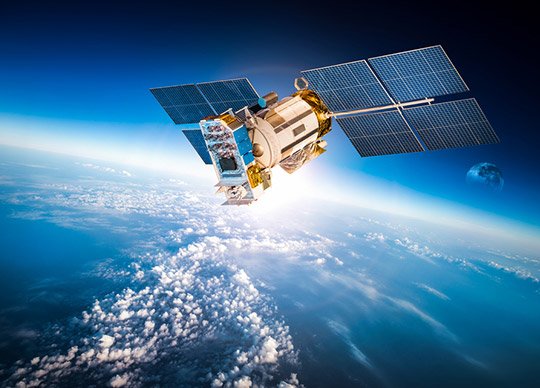
Contents
- Introduction to Inmarsat
- Purpose of Inmarsat
- History and Evolution of Inmarsat
- What is Inmarsat?
- SOLAS Regulations Related to Inmarsat
- Uses of Inmarsat in the Maritime Industry
- 6.1 Uses on Ships
- 6.2 Uses on Oil Rigs
- 6.3 Uses on Mega Yachts
- Inmarsat Components and Manufacturers
- Major Models and Popular Products
- Inmarsat Network Size, Coverage, and Technology
- Costs of Installation and Monthly Usage
- Conclusion
- References
1. Introduction to Inmarsat
Inmarsat is a British satellite telecommunications company providing mobile and fixed satellite communications services worldwide. Established to ensure that ships could stay in constant contact with shore-based entities, it has evolved to become a crucial part of the global maritime industry.
2. Purpose of Inmarsat
The primary purpose of Inmarsat is to provide reliable and secure satellite communications, particularly for maritime, aviation, and government operations. It ensures that vessels at sea can maintain contact with port authorities, other ships, and emergency services, thereby enhancing safety and operational efficiency.
3. History and Evolution of Inmarsat
Creation and Early Years
Inmarsat was established in 1979 by the International Maritime Organization (IMO) to provide reliable satellite communications for the maritime community. The idea was to enhance safety at sea by ensuring that ships, especially those in remote areas, could communicate effectively.
Evolution and Technological Advancements
Over the decades, Inmarsat has evolved significantly:
- 1982: Inmarsat’s first satellite was launched, primarily to serve the maritime industry.
- 1990s: Expanded services to include aviation and land mobile users.
- 2005: Privatized and listed on the London Stock Exchange.
- 2010s: Introduced the Global Xpress network, providing high-speed broadband services globally.
- 2020s: Continues to innovate with new satellite launches and expanded services for IoT and 5G connectivity.
4. What is Inmarsat?
Inmarsat provides a variety of satellite communication services, including:
- Maritime Communications: Ensuring constant connectivity for ships at sea.
- Aviation Communications: Providing voice and data services to aircraft.
- Land Mobile Communications: Supporting remote operations in industries like oil and gas.
- Government and Defence Communications: Offering secure communications for military and emergency services.
5. SOLAS Regulations Related to Inmarsat
The International Convention for the Safety of Life at Sea (SOLAS) mandates the use of Inmarsat systems under its Global Maritime Distress and Safety System (GMDSS). Key regulations include:
- SOLAS Chapter IV: Requires ships to have certain communication capabilities, including Inmarsat C for distress and safety communication.
- GMDSS: Inmarsat services are integral to the GMDSS, which ensures that ships can send and receive distress alerts and safety information anywhere in the world.
6. Uses of Inmarsat in the Maritime Industry
6.1 Uses on Ships
- Communication: Enables constant communication between ships and shore, ensuring operational coordination and safety.
- Emergency Services: Provides critical support for distress signalling and emergency communications.
- Operational Efficiency: Facilitates real-time data exchange, improving navigation, weather forecasting, and fleet management.
6.2 Uses on Oil Rigs
- Remote Monitoring: Allows for the monitoring of operations and safety conditions on remote oil rigs.
- Crew Communication: Ensures that crew members can maintain contact with their families and support networks.
- Data Transmission: Supports the transmission of operational data and environmental monitoring information.
6.3 Uses on Mega Yachts
- Luxury Communication Services: Provides high-speed internet and reliable communication services for passengers.
- Navigation and Safety: Enhances navigational capabilities and ensures constant communication with shore services for safety.
7. Inmarsat Components and Manufacturers
Inmarsat systems comprise several key components:
- Satellite Terminals: Devices that communicate directly with Inmarsat satellites.
- Antennas: Specialized antennas designed to maintain a stable connection with satellites.
- Control Units: Manage the operations and configuration of the satellite communication systems.
Major manufacturers include:
- Cobham SATCOM: Known for its Sailor range of maritime satellite communication systems.
- Intellian: Provides advanced satellite antennas and terminals.
- KVH Industries: Offers a variety of satellite communication solutions for maritime use.
8. Major Models and Popular Products
Cobham SATCOM
- Model: Sailor 900 VSAT
- Features: High-performance Ku-band VSAT antenna system.
Intellian
- Model: v100NX
- Features: Versatile and future-proof Ku-Ka convertible VSAT antenna.
KVH Industries
- Model: TracPhone V7-HTS
- Features: High-speed internet connectivity with global coverage.
9. Inmarsat Network Size, Coverage, and Technology
Network Size and Coverage
Inmarsat operates a global network of satellites that provide coverage to virtually every part of the world, including the oceans and polar regions. The network consists of:
- 13 Satellites: Covering different regions and providing redundant coverage to ensure reliability.
- Global Xpress (GX) Network: Provides high-speed broadband services worldwide.
- I-4 Satellites: Enable the Broadband Global Area Network (BGAN) services.
Network Technology
Inmarsat utilizes advanced satellite technologies to deliver its services:
- L-Band: Used for services like FleetBroadband, providing reliable communication even in adverse weather conditions.
- Ka-Band: Utilized in the Global Xpress network for high-speed broadband.
- S-Band: Employed in European Aviation Network (EAN) for high-capacity inflight connectivity.
10. Costs of Installation and Monthly Usage
Installation Costs
- Satellite Terminals and Antennas: $5,000 to $25,000 depending on the complexity and capabilities.
- Installation Fees: Typically range from $1,000 to $5,000.
Monthly Usage Costs
- Basic Communication Services: $500 to $1,500 per month.
- High-Speed Internet and Data Services: $2,000 to $10,000 per month, depending on data usage and bandwidth requirements.
11. Conclusion
Inmarsat has been a cornerstone of maritime communications since its inception. From ensuring safety at sea to enhancing operational efficiency, its services are indispensable to the maritime industry. With ongoing advancements in satellite technology, Inmarsat continues to expand its capabilities, providing robust and reliable communication solutions for the global maritime community.
12. References
- Inmarsat: About Us
- IMO SOLAS Regulations: IMO SOLAS
- Global Maritime Distress and Safety System (GMDSS): GMDSS
- Satellite Today: Inmarsat History
- Inmarsat Maritime Services: Maritime Services
- Cobham SATCOM: Sailor 900 VSAT
- Intellian: v100NX
- KVH Industries: TracPhone V7-HTS
For more detailed articles and information on maritime tools and technologies, visit MaritimeHub.com.




